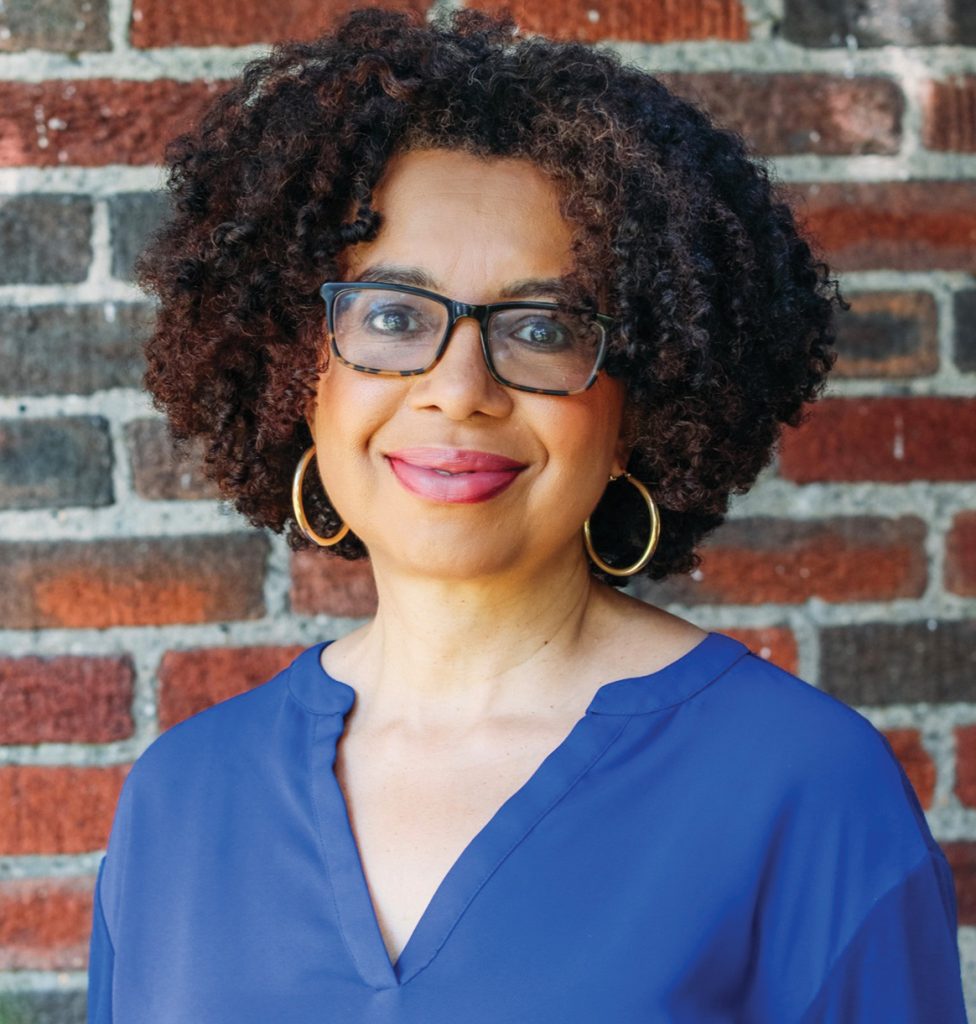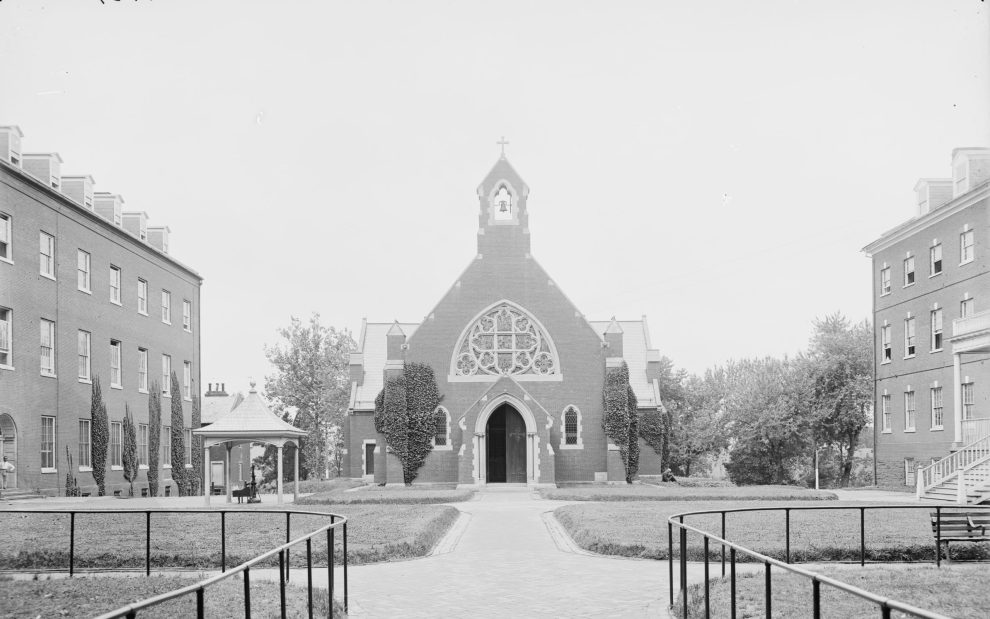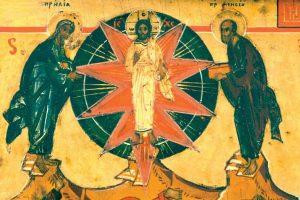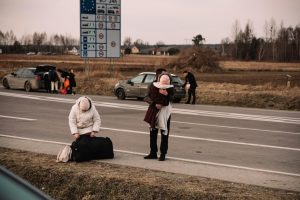
Around 1676, Ann Joice landed in the British colony of Maryland, which had been established, in part, as a refuge for English Catholics. Joice was a Black indentured servant who expected to serve out the term of her contract and then make a life for herself in this new land. Her plans, however, were thwarted when the white man holding her indenture burned her contract and forced her into slavery.
Over 150 years later, in 1838, her descendants were sold in one of the largest documented slave sales at the time. The Jesuit province in Maryland sold 272 people in order to pay their debts and save Georgetown, the first Catholic institution of higher learning in the United States. The sale of these 272 men, women, and children also helped the Jesuits to build additional schools and to provide resources to institutions around the country, founding what is now their strong legacy of Catholic higher education.
The story of Ann Joice and her enslaved descendants, meanwhile, remained largely unknown, until now. In a new book, The 272 (Random House) Rachel L. Swarns, a professor of journalism at New York University and journalist for the New York Times, brings Joice and her family to life, telling their story to demonstrate how foundational the institution of slavery was to the roots of the Catholic Church in this country.
“This is a story of heartbreak,” says Swarns. “It involves slavery and the tearing apart of families. It shows something that most of us don’t know: the foundational role slavery played in the emergence of the Catholic Church. But it’s also a story of family, love, faith, and resistance. These families held onto their faith despite the church’s betrayal and worked to make it more reflective of the ideals of a universal Catholic church. That’s an inspiring story.”
How did this book come to be?
This story came to me in the way stories sometimes come to journalists—unexpectedly. It might not have happened, except for protests at Georgetown in the fall of 2015. Students were concerned about two buildings that carried the names of two former college presidents, both of whom had organized this massive slave sale in 1838.
The protests caught the attention of a Georgetown alum, the chief executive officer of a tech company in Cambridge named Richard Cellini. He got really interested in the people who were sold, what happened to them and their descendants.
Georgetown had established a working group to look into its history, and Cellini reached out to a member of that group who told him that the 272 enslaved people had died. But he thought that was ridiculous—almost 300 people and they all died? So he hired a team of genealogists and started digging. He eventually reached out to an acquaintance who was a business reporter at the New York Times and let her know he had this potential story about this 1838 slave sale that benefited Georgetown.
This reporter was a colleague of mine, and she was intrigued, but wasn’t sure a slave sale from the 1800s was a news story for the New York Times. It is my enormous good fortune that she remembered I had written a book tracing Michelle Obama’s enslaved ancestors back to the early 1800s. So she didn’t delete the email: She forwarded it to me, and I knew immediately that it was a story. My work on Michelle Obama’s ancestors allowed me to explore how slavery shaped American families, and this seemed like a very natural next step for the kind of work that I was interested in. It allowed me to examine how slavery had shaped contemporary American institutions.
I have a better than average knowledge of 19th-century American slavery because of the research and work I did on my first book, American Tapestry: The Story of the Black, White and Multiracial Ancestors of Michelle Obama, which traces Obama’s enslaved ancestors, but I was astounded by what I found and how little I knew. I had never heard of priests owning people or selling people. I was really taken aback.
READ MORE: She confronted the church’s role in slavery—and reconciled her faith
The book follows the story of one family—Ann Joice and her descendants. Why did you decide to tell this story through the eyes of one family?
When I write about slavery, I’m keenly aware that there are people who just don’t want to engage with the topic. So how do I make a story like this accessible? How do I make people read? I felt that the way to do that was to tell the story of a family.
The story of this particular family parallels the arc of the emergence of Catholicism in the United States and the economy’s move from indentured servitude to slavery. The matriarch of the family, Ann Joice, arrives in the 1600s. She’s a Black woman who’s an indentured servant, but then her contract is burned and she’s forced into slavery. She’s left with nothing but her story, and she tells that story to anyone who will listen: Her liberty was stolen and she should be free.
That story is passed on from generation to generation to generation, and her descendants resist. Some kill an overseer and are executed. Others take the Jesuits to court and sue them for their freedom. In court, they lay out the story of Anne Joice and say they should never have been forced into slavery by Catholics. A handful are ultimately freed. Most are not so lucky, and end up remaining enslaved, and have to find ways to protect themselves and their families.
Harry Mahoney, a descendant of Ann Joice, saves the church’s money from soldiers during the War of 1812 and gets a promise from the Jesuits that he and his family will not be sold. That promise is broken in 1838 with the mass sale. He has two daughters, Louisa and Anna. One manages to escape and remains in Maryland and the other is shipped off to Louisiana during the sale of the 272.
The idea of Jesuit priests living on rural plantations is foreign to many people’s mental image of Jesuits, or Catholic priests at all. How did this come about?
Most Americans just simply are not familiar with this history. Jesuits arrived in Maryland in the 1630s, which was then a British colony. It was meant to be a place where Catholics, who were persecuted in England, could establish themselves. It was also a rural economy, and the Jesuits who came and established themselves there became large landholders—plantation owners. As the economy shifted from one based around indentured workers to a slave economy, the priests did as well.
Working on this book, I realized just how foundational slavery was to the development of the underpinnings of the Catholic Church in the United States. Priests who relied on slavery built the first archdiocese; Georgetown, the first Catholic institution of higher learning; and the first cathedral. Priests who operated a plantation and sold people built the first Catholic seminary. Enslaved people have been largely left out of the origin story that’s traditionally told about the Catholic Church, but they were foundational to the emergence of the church in the U.S. colonies.
How did the Jesuits reconcile their faith with the fact that they enslaved people?
It’s complicated. While some white people at the time viewed Black people as beasts or not human, the priests did not. They believed that Black people had souls and that they had an obligation to tend to and nurture those souls. At the same time, they also felt very comfortable enslaving, buying, and selling the bodies of these people.
Slavery exists and is described in the Bible. Rome also did not forbid the trafficking of Africans at this time. They would, a long time down the road, but they did not at this time. So there was no prohibition against it, and it became the way that Jesuits were able to sustain themselves, to thrive, and to expand first in the colony of Maryland and then in the young nation that emerged after the Revolutionary War. The Jesuit order ultimately became one of the largest slaveholders in Maryland.
It is important, I think, for people to know that all along the way, there were priests who raised questions and concerns. People sometimes say, when you talk about slavery and ask the kind of questions about justifying or reconciling slavery with religious beliefs or moral codes, “You can’t bring your 21st-century ideas to this. It was legal at the time.” But it’s really important to know that there were folks in the 1700s and 1800s who were concerned and raising questions. They were lonely voices for sure, but they were there.
What are some examples of the priests’ different mindsets toward slavery?
There are two priests who personify this gap. First there is Thomas Mulledy, who would become a very influential president of Georgetown and president of the Maryland Jesuit province. He very much believed in the enslavement of Black people and was the primary mover behind the sale of the 272 people.
Mulledy was an American who grew up with enslaved people in his household. He saw all these immigrants coming to the cities and said to himself, “The future of the church is not in rural plantations. The future is in the cities, where all of these Catholics are pouring into the United States needing schools and churches. As Jesuits, we need to position ourselves to be able to expand.”
He was, in many respects, a visionary. He could see that the future of Catholicism was something very, very different than what had emerged in the early United States. He wanted to build the future, a constellation of schools in the Northeast. And to do this, because the province was indebted and the priests were struggling for money just to keep going, he was willing to sell off their assets—272 men, women, and children.
On the other hand is Joseph Carbery, who ran a plantation in Maryland. He had a very different take. He saw the people who he was in charge of enslaving as people. He could see their humanity. He writes about a guy who built a windmill and marvels at his capacity and technical skill.
He saw that enslaving people and forcing them to work might not be the most efficient way of producing things on a farm. So he developed an experiment where he portioned off parts of the plantations and gave each portion to a family, allowing them to get part of the proceeds from the land they worked. People marveled at how productive he was able to make that plantation when he harnessed people’s own motivation and allowed them to earn money for their work.
When the sale happened, he was very concerned. Many of these families had been in Maryland and on the same plantation for generations, and he knew, as did everyone, that the plantations in the deep South were brutal places and that families would likely be torn apart. So he defied his superiors, and when they came to take people away he urged people to run.
Now, the complexity of this—because it’s all complicated—is that some people did run, including members of the family I focus on in The 272. I originally thought, “Oh, my goodness, that’s amazing. They escaped.” Carbery helped them escape. But then the ships sail and the people who manage to escape come back. Father Joseph Carbery welcomes them back and the family remains enslaved until the Civil War.
How did people calling for the mass sale of 272 people win out over voices such as Carbery’s?
Thomas Mulledy and his supporters and allies ended up being successful, and Rome approved their calls for a mass sale primarily because the province and Georgetown were in terrible, terrible shape. There was a lot of mismanagement of provincial finances and the province was in terrible debt. Meanwhile, Mulledy had overseen an expansion on the college but left it very much in debt as well. There were all these fears about the college closing.
So it really seemed—and Mulledy presented it this way to Rome—that selling all of their enslaved people was the only way for the college to survive and for Mulledy to bring about his vision of the future.
He and his allies also made the argument that they were selling people to Louisiana, a Catholic place, so families would be able to continue practicing their religion. They also argued that the large plantations meant buyers would be able to keep large numbers of enslaved people and keep families together. They basically said, “OK, we’re going to sell all these people, but it won’t be so bad. They’ll build a chapel for them there.”
At the same time, though, they did know that Black people were desperately terrified of the deep South, and rightfully so because of the brutal work conditions. And, ultimately, families would be broken apart in the sale, despite what they had pledged to Rome.
What happened during the sale?
It was one of the largest documented slave sales at the time. Slave sales, of course, were very, very common, particularly at this time because of the boom in cotton and sugarcane in the deep South and the huge demand for labor. Plantation owners in the Chesapeake could do very well by selling their people down South. This is a period where there is this whole domestic slave trade with the forced movement of people from the Chesapeake to the deep South. In that respect, this sale was very similar to other sales of the time. The scale is notable, though.
It was terrifying. The Mahoneys and the other enslaved people were aware that discussions about selling them had been going on for years at this point. We don’t know how they learned—whether they overheard or whether priests told them—but we do know that they were aware of what was going on. One of the priests wrote about being peppered with questions: “Is this going to happen? When is it going to happen?” and feeling at a loss for what to say, because it was awful to him, too.
There had also been small sales happening during this time. Louisa and Anna’s older brother was taken several months before with his family and others, and they were left to wait and wonder who would be next and when they would come.
Think about what it would be like to lose a family member that way, your brother or your son, and to know that any day you might be next. It was just a really terrifying and awful situation.
As a writer, I try to gather as much detail in archival material as I can to bring it to life, because I think it makes it real in a way that sometimes slavery doesn’t feel real. It feels like this thing long ago with nameless and faceless people. But knowing the families, knowing their names, hearing the priests talk about, “Oh my gosh, they’re asking me. What do I say?” All this makes it real in a way that slavery often doesn’t feel.
Where did the money go from the sale of these 272 people?
Some of it went to pay Georgetown’s debts so the school could survive. Some of it went to pay off other debts; the Jesuits owed money to the archbishop of Baltimore. And some of it went to finance Mulledy’s dream of establishing a network of colleges.
Some money went to Holy Cross: Holy Cross has done some work writing a report looking at their history in slave holding. University of Loyola Maryland also received money from the Maryland Jesuits to establish themselves, and they too are now doing work looking at their history.
The Jesuits also supported schools in different ways: not through direct financial payments but by providing leadership and training. These schools include St. Joseph’s in Philadelphia, Fordham in New York, Boston College, and Santa Clara in California.
So Mulledy not only orchestrated the sale of the people that enabled Georgetown to survive and thrive, but he would also be instrumental in helping to make his vision of a network of Jesuit schools a reality, The 1838 sale helped to make that possible.
READ MORE: In the beginning, there were Black Catholics
What was one story about this family that stuck out to you?
What really struck me about these families was that, despite being betrayed by the church, so many remained Catholic. Thousands of Black people left the church; not only were Catholic priests involved in enslaving people, but after the Civil War, the church was a segregated church. Yet many of these families stayed, and not only did they stay, but a number of them became lay leaders or even religious leaders. They worked to make the church more reflective of and responsive to Black Catholics and to make the church true to the ideals it espoused.
A number of these folks were involved with running schools and establishing Black parishes and religious organizations. It occurred to me that the Jesuits were, of course, institution builders. They built the underpinnings of the Catholic Church, and then they went on to build a number of prominent colleges that still exist today. But these people were also institution builders. They were determined to build institutions that were reflective of their own experience, and that is notable and inspiring.
As a Catholic, how does knowing this history affect your own faith life?
I was doing this work, reading these documents, writing about these people, and knowing what was going to happen to them as I was going to Mass.
My mother’s family came to this country from the Bahamas in the 1950s and ended up in New York living on a Catholic Worker farm run by Dorothy Day. I grew up in a family for whom Catholicism was really important, and it remains important to me. So learning about this history and wrestling with this history is complicated, but, in a crazy way, it makes me feel even more connected to the church than I did before.
I grew up in New York in a largely Irish and Italian parish. Black people played very little role in the story I grew up hearing about the church. Learning about these families and how they held on to their faith and worked to make the church more reflective of and responsive to Black Catholics was inspiring. I’m still going to Mass.
As journalists, I think we’re often aware of whose voices we are hearing and reporting on and whose voices are missing. None of us knew this history. Why? Again, whose voices were missing? I think that’s really important: I hope my book brings a fuller understanding of how the church emerged and gives voice to some of these families who have been mostly unseen for so long.
This article also appears in the September 2023 issue of U.S. Catholic (Vol. 88, No. 9, pages 16-19). Click here to subscribe to the magazine.
Image: Dahlgren Chapel at Georgetown University, Wikimedia Commons













Add comment